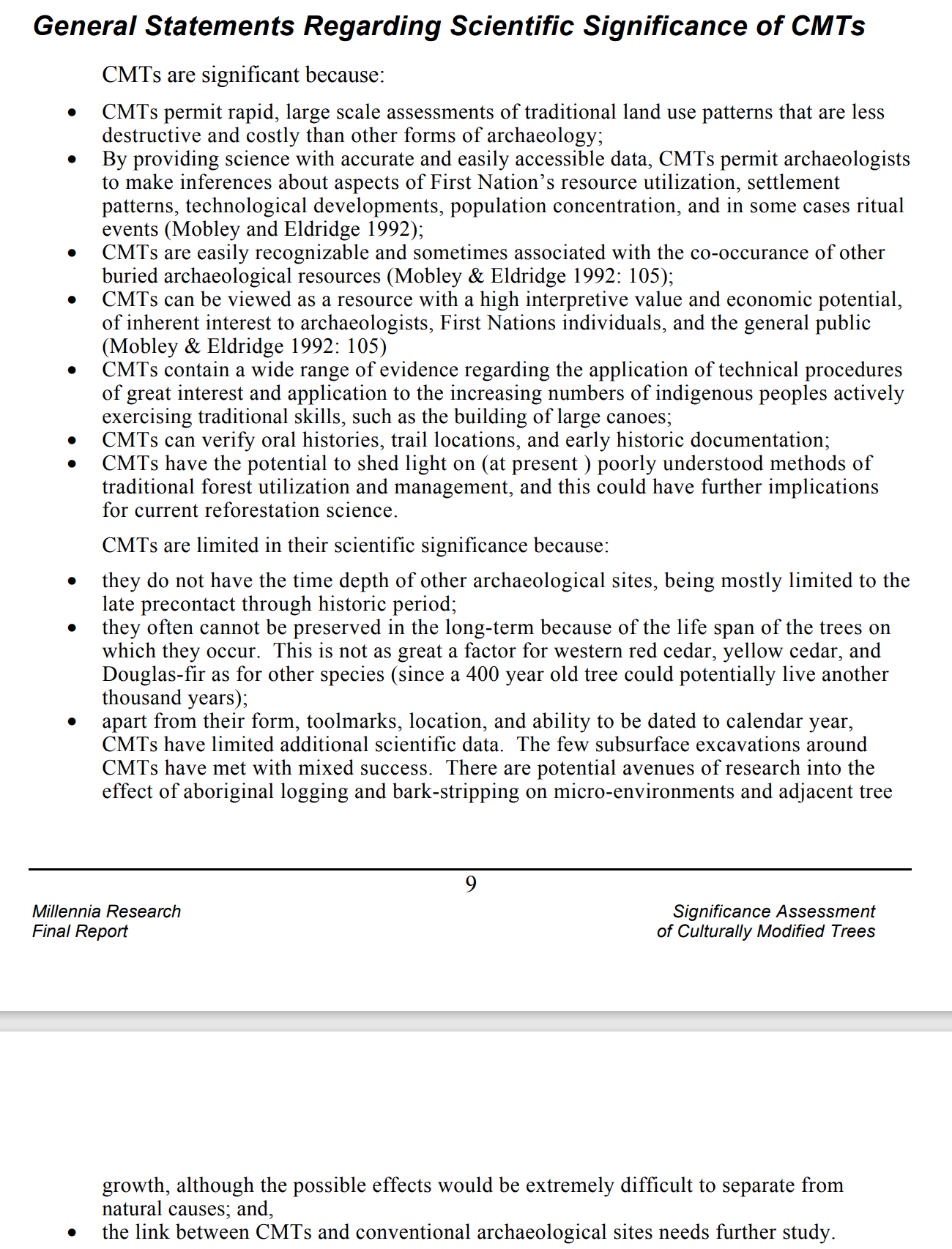Boon Wurrung Tree
This is a work-in-progress, project-related note (treat with caution).
Related notes:
An article mentioning scar trees and specifically the Boon Wurrung tree:
Frichot, Hélène. ‘Scarred Trees and Becoming-Witness’. Angelaki 27, no. 2 (2022): 114–29. https://doi.org/10/gq853v.
General
On Aboriginal archaeology.
Frankel, David. Between the Murray and the Sea: Aboriginal Archaeology in Southeastern Australia. Sydney: Sydney University Press, 2017.
On living heritage in application to Melbourne:
Nicholson, Mandy, and David Jones. ‘Wurundjeri-al Narrm-u (Wurundjeri’s Melbourne): Aboriginal Living Heritage in Australia’s Urban Landscapes’. In The Routledge Handbook on Historic Urban Landscapes in the Asia-Pacific, 508–25. London: Routledge, 2020.
Methods and Principles
Consider diverse human and nonhuman stakeholders as 'epistemic partners'.
Scar Trees
On the taking bark and building of boats.
Griffin, Darren, Delta Lucille Freedman, Bill Nicholson, Fiona McConachie, and Alexander Parmington. ‘The Koorong Project: Experimental Archaeology and Wurundjeri Continuation of Cultural Practices’. In Excavations, Surveys and Heritage Management in Victoria, 2:59–65. Bundoora: La Trobe University, 2013.
Useful for methods to analyse scar trees:
Spry, Caroline, Elspeth Hayes, Kathryn Allen, Andrew Long, Lisa Paton, Quan Hua, Brian J. Armstrong, et al. ‘Wala-Gaay Guwingal: A Twentieth Century Aboriginal Culturally Modified Tree with an Embedded Stone Tool’. Australian Archaeology 86, no. 1 (2020): 3–20. https://doi.org/10/gq8527.
Long, Andrew. ‘Aboriginal Scarred Trees in New South Wales: A Field Manual’. Sydney: NSW Environment and Heritage, 2015.
Old forest management practices prescribed ringbarking and thus killing modified trees to "encourage regeneration".
Dating Aboriginal Scarred Trees in north eastern Australia | Mick Morrison
Buhrich, Alice, and Johnny Murison. ‘The Western Yalanji Dendroglyph: The Life and Death of an Aboriginal Carved Tree’. Journal of Community Archaeology & Heritage 7, no. 4 (2020): 255–71. https://doi.org/10/ggxffc.
Geering, Katrina, Marion Ravenscroft, and Colin Roberts. ‘The Preservation and Management of Aboriginal Carved Trees’. Historic Environment 8, no. 1/2 (1991): 42–46.
A film about scar trees:
The Lake of Scars. Documentary. Wedge-Tail Pictures, 2022.
Notes on the significance of culturally modified trees. This is in Canada and very human-centric, still useful as a template.

Eldridge, Morley. ‘The Significance and Management of Culturally Modified Trees’. Final report. Vancouver: Vancouver Forest Region and CMT Standards Steering Committee, 1997.
Considerations and Questions
This is a dated article but with some relevant considerations, even if for critique.
Geering, Katrina, Marion Ravenscroft, and Colin Roberts. ‘The Preservation and Management of Aboriginal Carved Trees’. Historic Environment 8, no. 1/2 (1991): 42–46.
The site/place is imperative for the cultural meaning and understandings of culturally modified tree. The article argues that they should remain in situ while possible. Consequently, for our project, it is important that the site and other trees are participate/transfer into the digital form along with Boon Wurrung Tree. This is an advantage of the digital forms that the surroundings and their multiple temporal states or perspectival aspects can be captured.
Questions:
Is it OK for the termites or fungi to feed on culturally modified trees? Should humans support the preservation/longevity of such tree in preference to and at the expense of other living beings that would otherwise call them food, home, place, and the substrate of their communities? This is a large-scale issue because the article indicates that by the end of the 1980s 80% of carved trees were "under threat" of the destruction by termites. Is this a problem or is the re-forming of trees into the bodies of termites, into soil, etc. is to be respected and celebrated?
A similar consideration can apply to the trees themselves. For example, should stop callus regrowth to preserve existing carvings?
Aboriginal communities did not preserve trees outside of their sites, in museum-like institutions or structures (or did they)? Is the resistance to convert living agents into "heritage" a better attitude towards more-than-human cultural content because this framing encourages life cycled without trying to lock things down according to the preferences of some stakeholders?
Trees resist the removal of calluses by rapid regrowth (which can be interpreted as a political action, an expression of preference, a will for life, etc., cf. 1) but can also get damaged by callus cutting because it creates favourable conditions for fungi and microorganisms. The practice of removing calluses to preserve human carvings also destroys information about Indigenous tree-modification practices.
On Contemporary Carving Practices
Koenig, Jennifer, Jon C. Altman, and Anthony D. Griffiths. ‘“Too Many Trees!”: Aboriginal Woodcarvers in Australia’. In Carving Out a Future : Forests, Livelihoods and the International Woodcarving Trade, 135–46. London: Routledge, 2005.
Tool-Use Experiments
Hayes, Elspeth, Caroline Spry, Richard Fullagar, Anna Tuechler, Petra Schell, and Megan Goulding. ‘Tool-Use Experiments to Determine the Function of an Incised Ground Stone Artefact with Potential Symbolic Significance’. Journal of Lithic Studies 7, no. 3 (2020): 17 p.-17 p. https://doi.org/10/gq842w.
VR Reconstructions
Keep, Thomas. ‘The Mernda VR Project: The Creation of a VR Reconstruction of an Australian Heritage Site’. Journal of Computer Applications in Archaeology 5, no. 1 (2022): 238–54. https://doi.org/10/gq842q.
Measurement
On the current techniques of management of culturally significant trees and the need for improvement. Useful to define the gap and the opportunity for lidar-based and other high-fidelity approaches.
Griffin, Darren, and Abby Cooper. ‘“Scarred for Life Too”: Measuring Girth and Estimating Ages of Culturally Modified Trees Using Comparative Examples from Wotjobaluk Country, Western Victoria’. Excavations, Surveys and Heritage Management in Victoria 9 (2021): 15–26. https://doi.org/10/gq843b.
Plants and Art
Aloi, Giovanni, ed. Botanical Speculations: Plants in Contemporary Art. Cambridge: Cambridge Scholars, 2018.
Exhibition Precedents
Footnotes
Meijer, Eva. ‘Political Nonhuman Animal Voices: Rethinking Language and Politics with Nonhuman Animals’. In Animals and Their People: Connecting East and West in Cultural Animal Studies, edited by Anna Barcz, 221–34. Leiden: Brill, 2019.˄